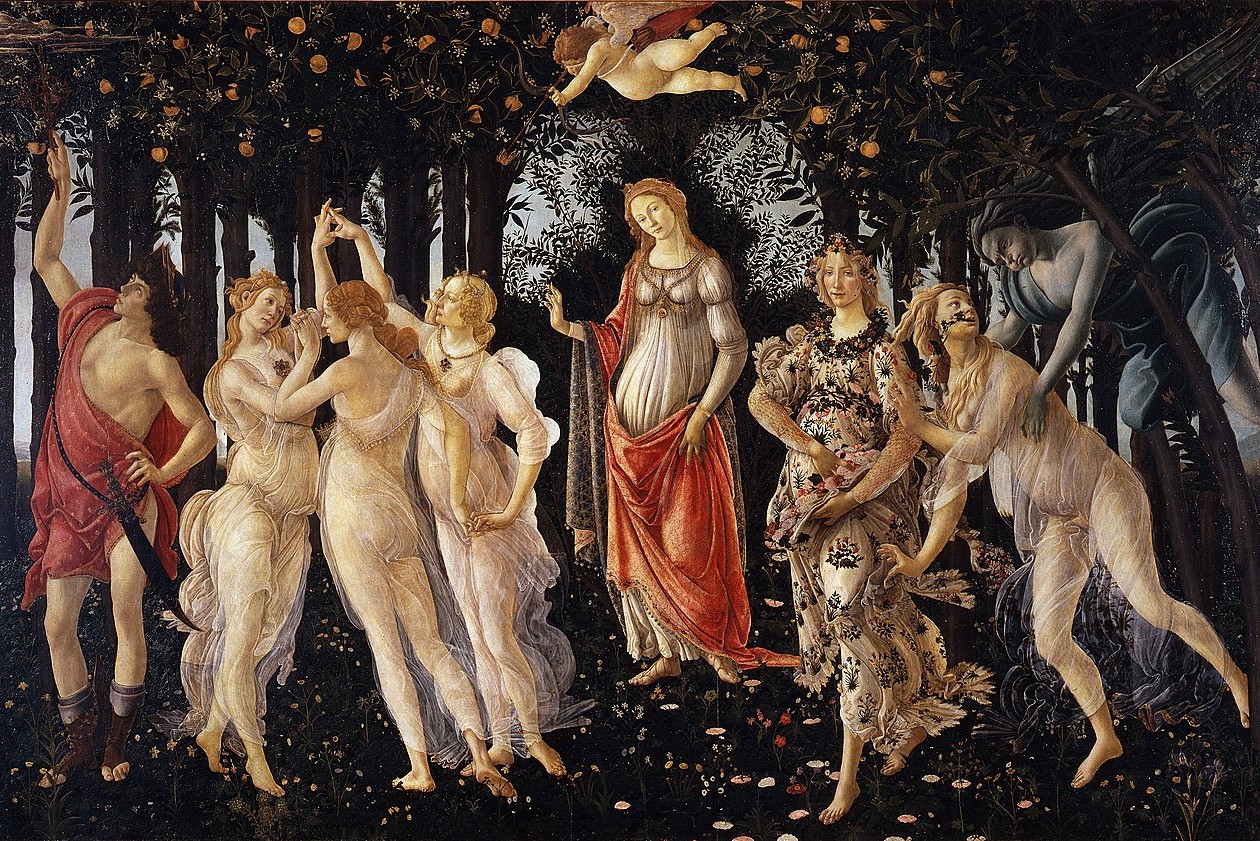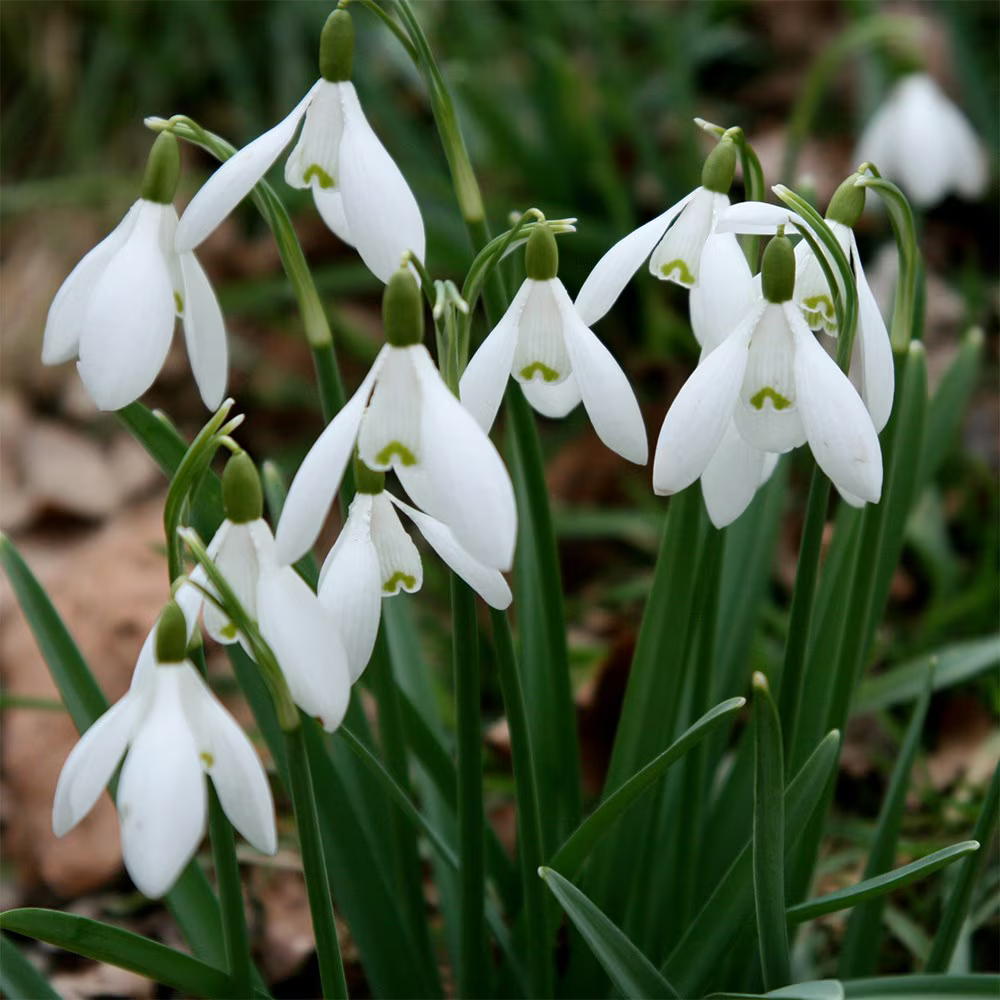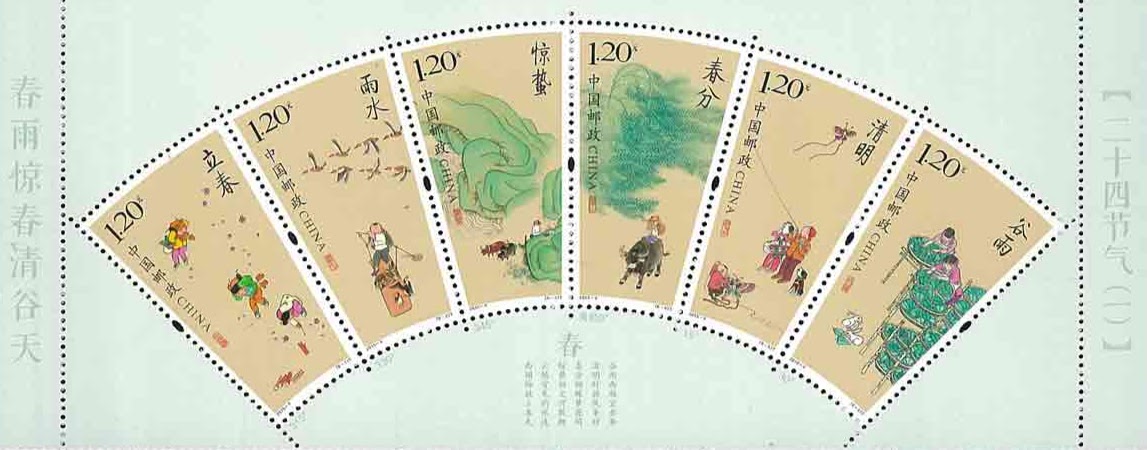
La Primavera by Sandro Botticelli (c. 1482)
Today’s Candlemas and this has got me thinking about the idea of seasonality. What’s compelling about seasons is that there’s actually more than one way of defining them.
I mean ultimately there’s no hard limit on the number of potential season-systems there are, as you can choose to slice the pie into as many segments as you feel. Near the equator for example there’s arguably only two clear seasons – the rainy season, and the dry.
There’s also dozens of culturally contingent forms for the seasons that interact with local religious and agricultural traditions. That makes sense right? Cos any method of time-keeping basically exists to help humans figure out when to do specific things.
In the West, there are three basic season-models. These are: meteorological seasons, astronomical seasons, and phenological seasons.
To touch on meteorological seasons very briefly, they’re basically an attempt to blend the phenological and astronomical seasons with the vulgar calendar by breaking the year up into four blocks of three-monthly periods that appear to make the most sense based on temperature and weather trends for those parts of the year.
It’s kinda janky, not least cos it flattens stuff in weird ways. I understand that in the USA the same rough meteorological season-year is used across the country, in spite of the fact that that takes in a huge diversity of climates and bio-regions.
And all of that is before you take into consideration global weirding – which, sure, affects all season-models to some extent, but significantly throws out one based on expected weather patterns.
Oak Kings and Holly Queens
Moving on then to something more tangible, we’ve got the astronomical seasons. These are the most widely known by a longshot, and are what the tropical zodiac is configured around. Thus, you’ve got 0° Aries marking the Vernal Equinox; 0° Cancer: Summer Solstice; 0° Libra: Autumnal Equinox; and 0° Capricorn: Winter Solstice.
These seasons are all about the relative quantity of the Sun’s light reaching Earth, which is tilted on its axis some 23.5 degrees, as it makes its yearly orbit around the Sun. The Summer Solstice is the longest, brightest day. The Winter Solstice is the longest, darkest night. The equinoxes (equal nights) are turning points, where light triumphs over dark, and vice versa.
Now let’s meet the phenological seasons. They are most commonly known to people as the cross-quarter days, and form the additional four spokes of the wheel of the year alongside the astronomical season markers.
These are the absolute vibe kings of the seasons. The root “pheno-” in the name is the same as that in the word phenomenon, and comes from the Greek “phaino" (φαίνω), which means “to appear” or “to show up.”
So phenological basically means the study of appearances, it’s about noticing when things – in this case, the seasons – show up. The cross-quarter days are the moments each year when the very first signs of the coming season begin to make themselves known. Where I am in the north of the UK, the appearance of snowdrops (joyfully also called Candlemas Bells I discovered today thanks to Dr Icy Sedgwick), marks the very first stirrings of spring.

Common Snowdrop (Galanthus nivalis)
I definitely find these points have a way of showing up in my body and energy, fwiw. It’s at the outset of phenological winter that I first start feeling like I ought to hibernate! Similarly, while the Aries ingress is impossible to deny for its impact on waking the senses, I know it’s at Candlemas/Imbolc that I begin to thaw.
All Change, in Thoughts as Well as Things
What I love about the interaction of these two season-models is that they serve to highlight the way all things are simultaneously arising, culminating and falling away. Succedent, Angular, Cadent.
So today is, phenologically speaking, the start of spring. But here’s the thing – it’s also midwinter. We’re halfway between the Winter Solstice and the Vernal Equinox. We couldn’t be more in the heart of winter if we tried. It’s the time of fixed Saturn, the air is cold. Spring feels both right around the corner, and as far away as it’ll ever be. Both are occurring simultaneously, and in codependence with one another. The culmination (peak/summit) of winter is intrinsically the point at which it has begun to end.
Likewise, Beltane is the greatest expression of spring you can imagine, Taurus season is in full swing, merry is the month of May. But, secretly, it is the death of spring. Sumer is icumen in.
I should briefly note here that Shakespeare’s A Midsummer Night’s Dream necessarily places the beginning of summer on Beltane, as the play takes place on the night of the Summer Solstice.
On Lammas it feels though summer will last forever, we’re in the realm of fixed fire. But the ears of wheat hang heavy, and the nights are cooling. Samhain/Halloween – the pumpkin spiced latte of it all, and yet we meet that moment with the festival of death because, in our bones we know winter has arrived.
Of course, the astronomical season markers are an essential part of this process. But whereas the phenological points are these silent changings of the guard between the periods of the year, the astronomical points are much more overt.
With their preoccupation with light, the astronomical festivals are solar in that they loudly declare the arrival of the season – they come about at the point at which nobody would deny that the season being heralded is not already all around us and self-evident.
It follows then that the phenological seasons are quite lunar in that they are process oriented, half witnessed and subtle. They’re concerned with secret arisings and changes below the surface. They set things in motion.
Of course there’s no need to pick a side here – the point is that there are many beginnings and endings taking place all the time, and all in interdependence with one another.
The Root of Heaven and Earth
The Chinese Jiéqì (节气) (Solar Term) calendar is but one example of an approach to season that embraces this, as befitting the cultural-philosophical milieu which gave us the Tao. It divides the year into 24 “micro-seasons” each about 15 days long. They’re defined by the position of the Sun relative to the ecliptic – thus it’s primarily an astronomical calendar.
But in spite of this, it acknowledges the phenological festivals as key originating moments of each season, and each solar term is named for common phenological observations that arise during their span.

Chinese postage stamps featuring the solar terms of spring
Just look at Spring here:
- Lìchūn (立春) – Beginning of Spring (Feb 3–5)
- Yǔshuǐ (雨水) – Rain Water (Feb 18–20)
- Jīngzhé (惊蛰) – Awakening of Insects (Mar 5–7)
- Chūnfēn (春分) – Spring Equinox (Mar 20–22)
- Qīngmíng (清明) – Clear and Bright (Apr 4–6)
- Gǔyǔ (谷雨) – Grain Rain (Apr 19–21)
Anyway, all I have to say is that I really like that.
Holding both origin points for each season in mind has been one of the most enriching and connecting practices I've enjoyed over the years, and I’d invite you to play around with trying on different season-hats and see how they fit moment to moment. It might jiggle something loose, release something, idk.
I always think about when I was child, and I had very little understanding of where exactly the seasons fell. And, you know, I always felt super weird on January 1st because I had internalised the idea that it was the first day of spring, because the big winter festival period had ended. I say this because I know a lot of people still have this experience, whether they’re consciously aware of it or not.
These dim months are much more enjoyable – and manageable – when they’re given their due, and their proper place within the cycle of light and day, arising and falling. Winter is hard: we need more light, cold is bad. That’s all true, but knowing that not just in our minds, but our bodies, can really help.
There’s also something relentlessly mystical and non-dual about seeing the seasons within each other. This too shall pass. 😎
As a final disclaimer: as a Brit I am not bound by the strictures of Punxsutawney Phil, and thus would like to take this moment to wish you a happy first-day-of-spring.
 doubtshrine.uk
doubtshrine.uk